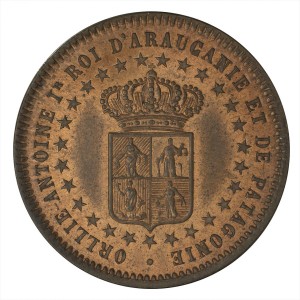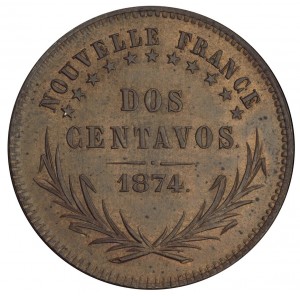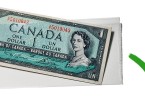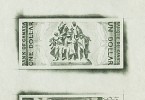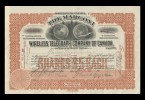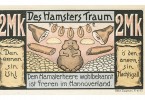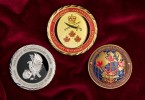Coins from a nation that wasn’t: Araucania and Patagonia
By David Bergeron, Curator
D’Antoine de Tounens in a meeting with the Mapuche people of Patagonia. (Wikimedia Commons, Jules Peco?)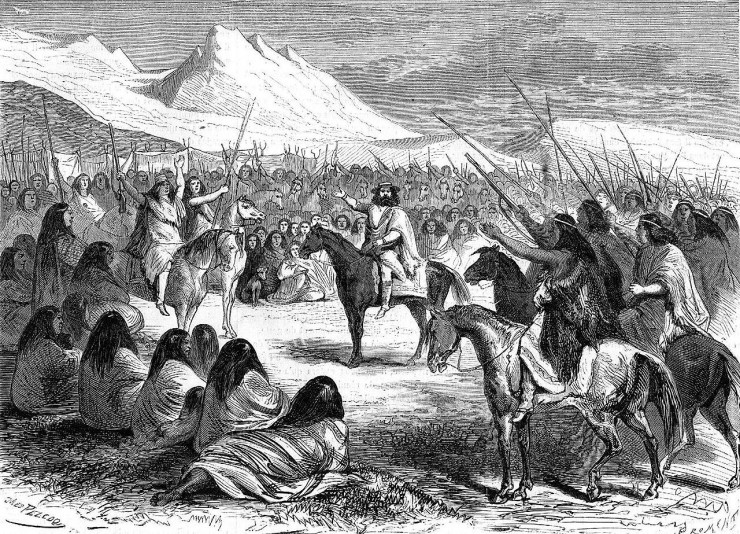
It is not unusual for “micro-nations”— city-states, principalities or minor kingdoms—to produce their own currency. Having a national currency is one way that a fledgling nation can promote its independence—sometimes before there even is a nation. But this coin, from a purely conceptual country in South America, is most intriguing for the history it now represents: the attempt of an indigenous people to establish their own nation in the face of colonization. Even more intriguing, what’s stamped on the coin implies this imaginary nation had already been colonized–by France.
Patagonia from the survey by the British ships Adventure and Beagle. (Wikimedia Commons, John Arrowsmith, 1842)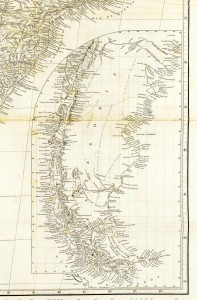
In the middle of the 19th century, a French lawyer and adventurer named d’Antoine de Tounens became fascinated by the Mapuche people of the Patagonia region of South America. The Mapuche were struggling to protect their ancestral lands, their identity and their culture from colonial expansion by the governments of Chile and Argentina. De Tounens went to Chile in 1858 to meet the Mapuche, whom he admired for what he regarded as their heroic resistance, and took up their campaign for self‑determination and sovereignty. In co-operation with their leaders, de Tounens drafted a constitution for “Araucania and Patagonia”, a region located in the southern half of modern Chile and Argentina. They declared the district a kingdom and de Tounens was named as its first monarch. The Chilean government arrested him in 1862, put him on trial and declared him insane. Narrowly avoiding execution, de Tounens was deported to France.
The National Currency Collection possesses three 2-centavo coins minted for Araucania and Patagonia in 1874. What is so curious about these coins is that they claim this potential nation for France. The legend on the reverse reads “NOUVELLE FRANCE / DOS / CENTAVOS / 1874". De Tounens appeared to have baptized the nation as part of New France, yet this designation is seen nowhere else but on the coins. The coins don’t originate from South America but by some accounts may have been struck, presumably at de Tounens’ request, in Belgium.
De Tounens intended to take the coins back with him to Patagonia to help re-establish his kingdom. Although he returned and failed on several occasions, a number of countries did choose to recognize his fledgling state. But it was not to be. In 1878, Orélie-Antoine de Tounens (as his magisterial name was) died in France as the exiled King of Araucania and Patagonia. A successor to the office of Royal Highness to the Crown of Araucania and Patagonia (in exile) still lives in France today–Prince Antoine IV.
The Museum Blog
Becoming a Collector II
By: Graham Iddon
So now you’ve decided that collecting currency is far more fascinating than collecting 14th Century Flemish altar paintings and have begun to accumulate some items. Good for you, those paintings are a bother to dust and currency is far easier to take care of.
Becoming a Collector I
By: Graham Iddon
Collecting things is a very common human urge. Be they matchbooks, pop bottles or 17th century Flemish altar paintings, owning large numbers of the same type of thing is a fascinating pastime for many of us.
The Adventure of Exhibit Planning III
By: Graham Iddon
During the planning stages stamping the word ‘final’ on any given aspect of a travelling exhibition can seem less of a directive and more of an overly optimistic suggestion.
Notes from the Collection: Recent Acquisitions II
By: Paul S. Berry
This month’s selections highlight various areas of Collection development. These include what are called financial instruments: items such as stocks, bonds shares and other articles that represent a contract to deliver money in some manner.
Museum Reconstruction - Part 1
By: Graham Iddon
In early February, a small group from the Bank’s Communications Department booked a brief tour of the main floor and first basement at the Wellington Street head office. It’s still in the demolition phase of the renovation.
Notes from the Collection: Notgeld, Emergency Money from Interwar Europe
Notgeld, German for emergency money, first appeared at the beginning of World War One and was issued until 1924. Through these notes we can see the entire story of Germany’s experience with out-of-control inflation between the wars.
Notes From the Collection: Recent Acquisitions
By: Paul S. Berry
Before the Museum closed, and the Collection moved to Gatineau, the curators regularly hosted a show and tell session for staff to see new acquisitions. With the help of the Museum’s new blog, that tradition will continue; only now, you too will be able to see and learn about some of the brilliant new stars in the Collection. Get out your sunglasses!
